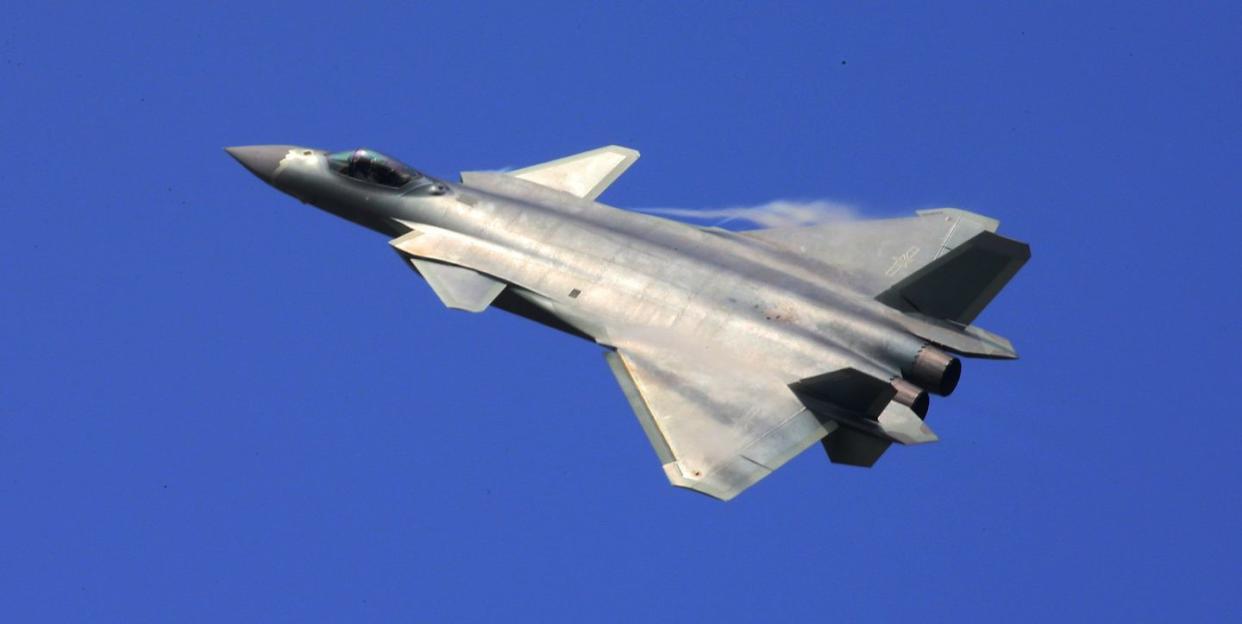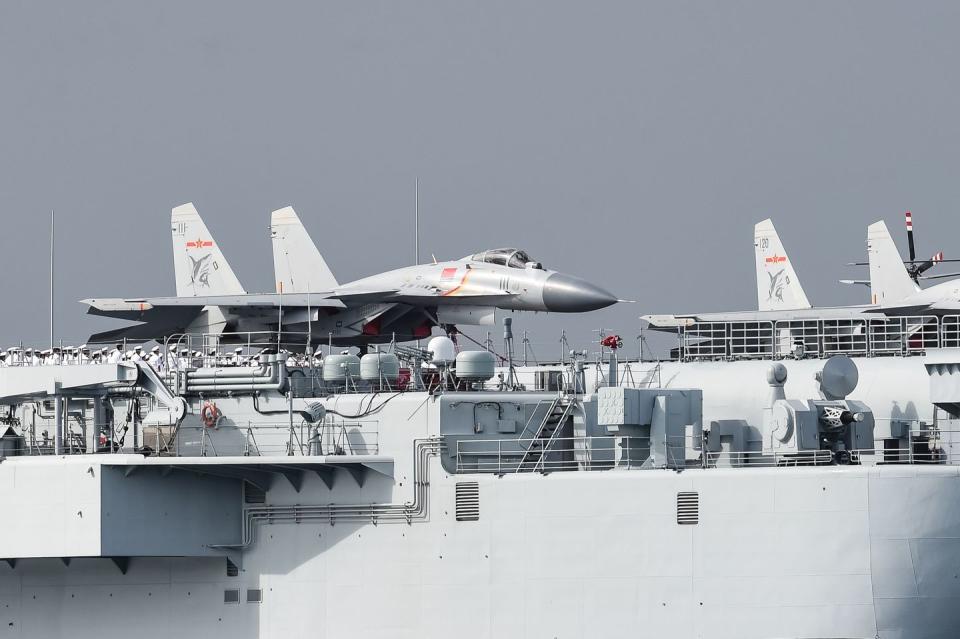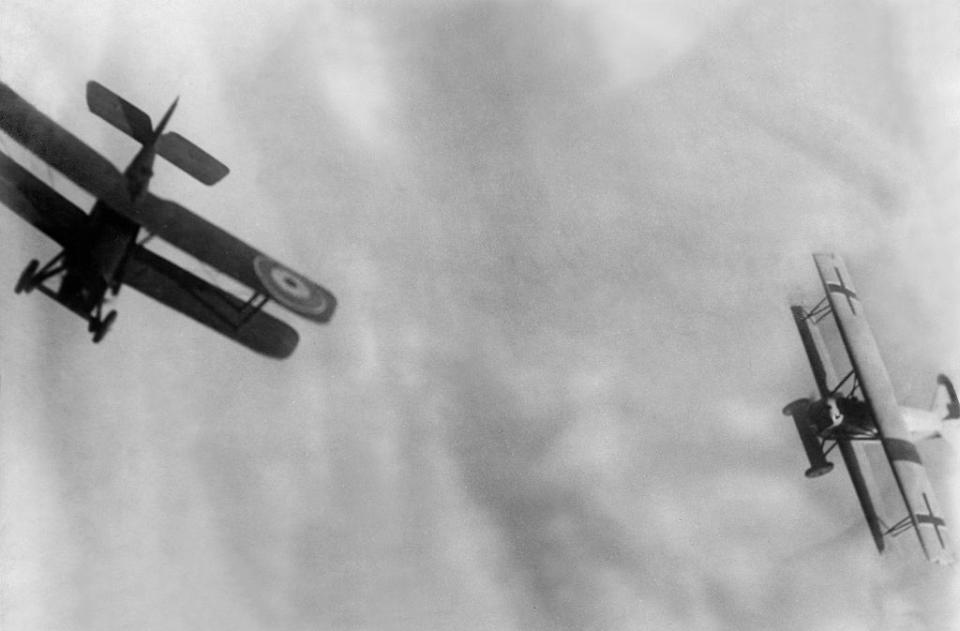China's Airborne Laser Weapon Would Change Dogfighting Forever

The Chinese military put out notice it wants airborne laser pods.
The pods could be used offensively or defensively, against aircraft or even missiles.
Airborne lasers, moving at light speed, could end dogfighting as we know it.
China’s military is soliciting would-be suppliers for a new airborne laser weapon. Notices on a government website invited defense contractors to provide information on an airborne laser attack pod. Depending on the level of power, the pod could be used to defend a friendly aircraft from incoming missile threats or destroy enemy aircraft and ground targets. Laser weapons are the next revolution in aerial warfare and could make dogfighting obsolete.
According to the South China Morning Post, weain.mil.cn, the official weapons and equipment procurement website of the People’s Liberation Army (PLA) published two solicitations to contractors, one titled, “procurement plan for airborne laser attack pod” and the other “price inquiry on procurement plan for controlling software module of laser attack platform.” The solicitations, marked confidential, invited China’s defense firms to bid to develop the items. The Pentagon uses a similar system to procure weapons, equipment, and other technology.

Airborne laser pods would be mounted to Chinese warplanes such as the Shenyang J-15 “Flying Shark” carrier-based fighter, J-20 “Mighty Dragon” heavy fighter, and support aircraft such as the Xi’an Y-20 heavy transport. Their use would depend on the amount of power available. For example, lower power lasers could be used to disable or shoot down air-to-air missiles threatening the aircraft. Alternately, they could blind enemy pilots within visual range. Higher power weapons could damage and even destroy aircraft or larger ballistic missiles.
The U.S. Air Force has already expressed an interest in laser weapons. The service wants to place self-defense laser pods on KC-135 Stratotankers. Although the KC-135 dispenses chaff and flares to spoof radar and infrared guided missiles, the aircraft and others like it lack an “active defense” system capable of shooting down incoming missiles. Air Force Special Operations Command is interested in putting a laser weapon on the AC-130U “Spooky” gunship, giving the flying arsenal a way of destroying or disabling targets on the ground without using guns or missiles.
The service is also interested in an offensive laser pod for fighter jets, including the F-35. The fighter-equipped laser will probably represent the most profound way lasers will change aerial warfare. A weapon powerful enough to damage or destroy another enemy aircraft would be a devastating close range opponent. A laser pod would replace a chemical energy gun like the F-35’s GAU-22/A and short range missiles like the infrared-guided AIM-9X Sidewinder.

A laser is unaffected by traditional aircraft gun issues, including weapon accuracy and dispersion due to wind and gravity. A laser will fly absolutely straight, striking anything its path. A laser could also be powered by an onboard generator, theoretically providing enough energy for an unlimited number of shots. The F-35A, on the other hand, carries only 182 rounds for the GAU-22A, enough for just a few seconds of fire.
A laser weapon would also be an improvement over short-range air-to-air missiles. Infrared guided missiles need to lock onto the enemy plane’s heat signature in order to conduct a successful intercept. A laser could simply target anything the pilot sees. A laser is immune to existing countermeasures and can not be fooled into following decoys. A laser travels at the speed of light, making it impossible to evade.
In other words, lasers could make obsolete many aspects of air-to-air dogfighting. This could make dogfighting itself obsolete, as a fighter with a laser pod could destroy any enemy aircraft within range, instantaneously and without the need for a follow-up shot. Fighters would be forced to search and destroy one another from beyond visual range while attempting to stay out of laser range. For years, air forces have anticipated the end of the dogfight—the laser may finally put the practice to an end.

But laser weapons face significant challenges. Lasers are complex, delicate weapons, and so far no country has fielded an actual working airborne laser weapon. An airborne laser must not only be durable and reliable but also capable of standing up to the rigors of high performance flight. It also requires the ability to generate and store tremendous tens of kilowatts of electricity. Finally, lasers themselves are degraded as they pass through the atmosphere, as airborne particulates such as water, dust, or ice refract laser energy and degrade the power of the beam. A pilot trying to survive against a laser-armed foe could find flying into a cloud his or her best shot at survival.
Lasers are clearly the way forward in aerial warfare. China’s solicitation proves the country is watching the rest of the world, particularly the U.S., and investing in lasers for the same purposes. Airborne lasers aren’t ready yet, but once they are aerial warfare will never be the same.
Source: SCMP
You Might Also Like

 Yahoo News
Yahoo News 
